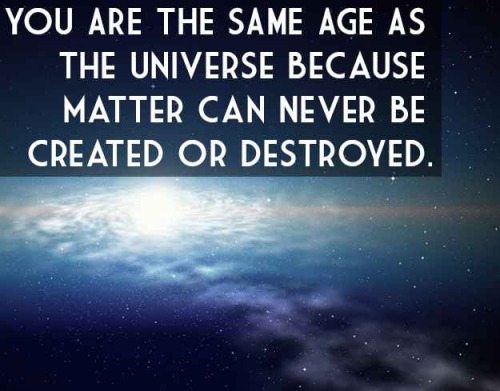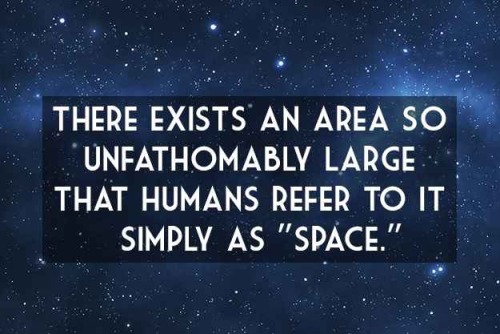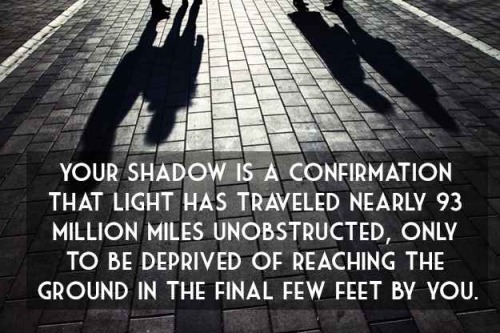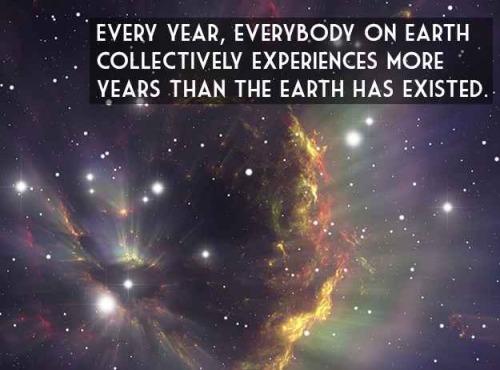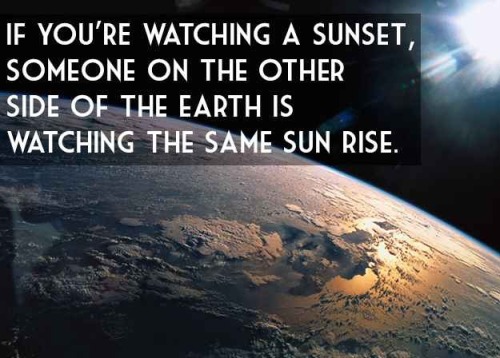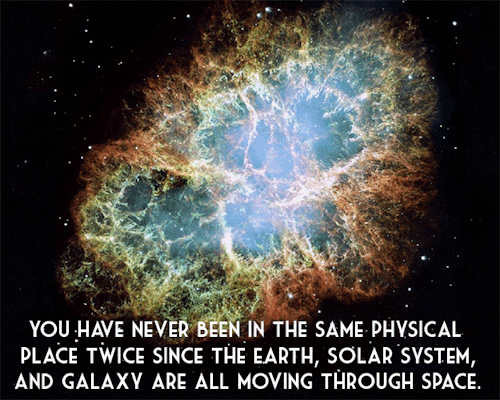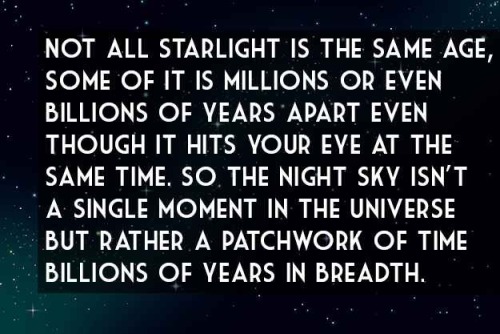
This is a studyblr for everyone have some passion for science, especially astronomy and biology
129 posts
Latest Posts by study-astronomy-biology-ref - Page 3


SwRI’s Parker discovers moon over Makemake in the Kuiper Belt A Southwest Research Institute-led team has discovered an elusive, dark moon orbiting Makemake, one of the “big four” dwarf planets populating the Kuiper Belt region at the edge of our solar system. The findings are detailed in the paper “Discovery of a Makemakean Moon,” published in the June 27 issue of Astrophysical Journal Letters.
“Makemake’s moon proves that there are still wild things waiting to be discovered, even in places people have already looked,” said Dr. Alex Parker, lead author of the paper and the SwRI astronomer credited with discovering the satellite. Parker spotted a faint point of light close to the dwarf planet using data from Hubble’s Wide Field Camera 3. “Makemake’s moon – nicknamed MK2 – is very dark, 1,300 times fainter than the dwarf planet.”
A nearly edge-on orbital configuration helped it evade detection, placing it deep within the glare of the icy dwarf during a substantial fraction of its orbit. Makemake is one of the largest and brightest known Kuiper Belt Objects (KBOs), second only to Pluto. The moon is likely less than 100 miles wide while its parent dwarf planet is about 870 miles across. Discovered in 2005, Makemake is shaped like football and sheathed in frozen methane.
“With a moon, we can calculate Makemake’s mass and density,” Parker said. “We can contrast the orbits and properties of the parent dwarf and its moon, to understand the origin and history of the system. We can compare Makemake and its moon to other systems, and broaden our understanding of the processes that shaped the evolution of our solar system.”
With the discovery of MK2, all four of the currently designated dwarf planets are known to host one or more satellites. The fact that Makemake’s satellite went unseen despite previous searches suggests that other large KBOs may host hidden moons.
Prior to this discovery, the lack of a satellite for Makemake suggested that it had escaped a past giant impact. Now, scientists will be looking at its density to determine if it was formed by a giant collision or if it was grabbed by the parent dwarf’s gravity. The apparent ubiquity of moons orbiting KBO dwarf planets supports the idea that giant collisions are a near-universal fixture in the histories of these distant worlds.
top Image: illustration shows Makemake’s bright red surface and the inferred darker surface of the moon, known as MK2. Image Courtesy of NASA/SwRI/Alex Parker
lower Image: Different views of the Makemake system taken two days apart. Image Courtesy of NASA/Hubble WFC3/SwRI/Alex Parker

A section of Hubble’s sharpest view of the Andromeda galaxy to date, taken last year.
source
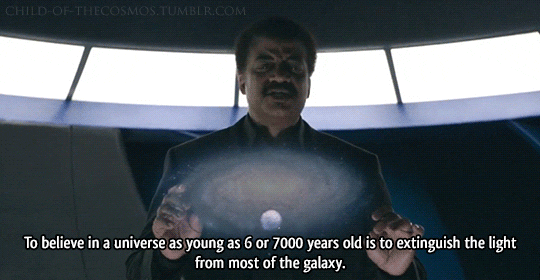
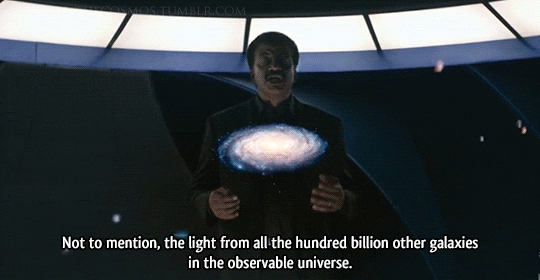
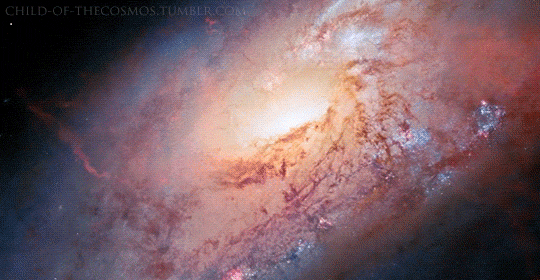
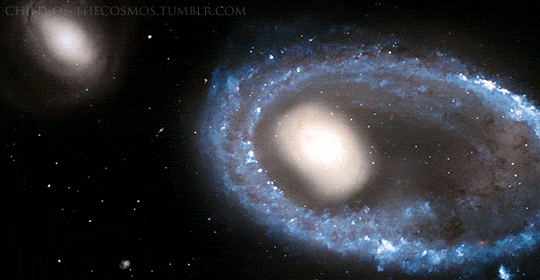

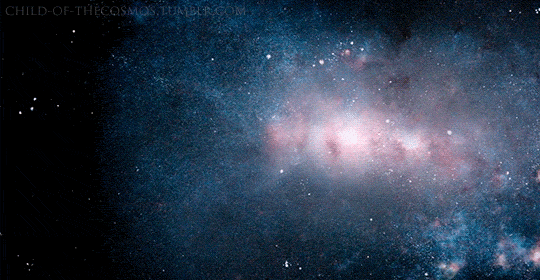
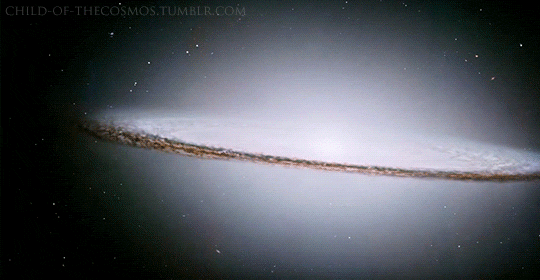
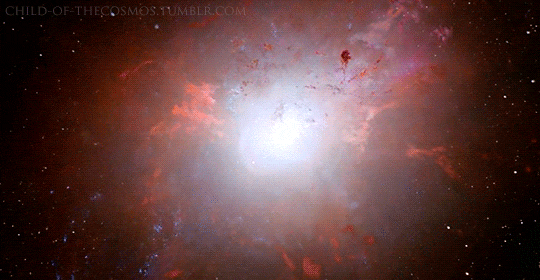
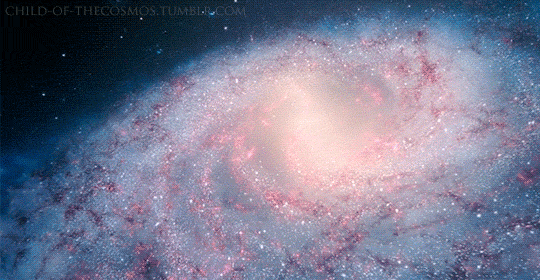
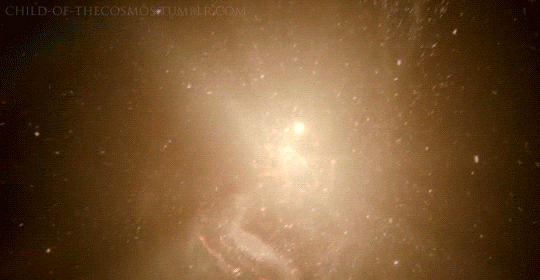
The Light Year: Part 3 of 3 (Part 1, Part 2) Episode 5: A Sky Full of Ghosts, Cosmos: A SpaceTime Odyssey
Solar System: Things to Know This Week

For the first time in almost a decade, we’re going back to Jupiter. Our Juno spacecraft arrives at the king of planets on the fourth of July. From a unique polar orbit, Juno will repeatedly dive between the planet and its intense belts of charged particle radiation. Juno’s primary goal is to improve our understanding of Jupiter’s formation and evolution, which will help us understand the history of our own solar system and provide new insight into how other planetary systems form.
In anticipation, here are a few things you need to know about the Juno mission and the mysterious world it will explore:
1. This is the Big One

The most massive planet in our solar system, with dozens of moons and an enormous magnetic field, Jupiter rules over a kind of miniature solar system.
2. Origin Story

Why study Jupiter in the first place? How does the planet fit into the solar system as a whole? What is it hiding? How will Juno unlock its secrets? A series of brief videos tells the stories of Jupiter and Juno. Watch them HERE.
3. Eyes on Juno
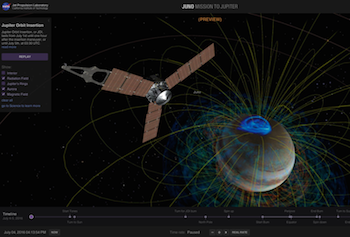
If you really want a hands-on understanding of Juno’s flight through the Jupiter system, there’s no better tool than the “Eyes on Juno” online simulation. It uses data from the mission to let you realistically see and interact with the spacecraft and its trajectory—in 3D and across both time and space.
4. You’re on JunoCam!

Did you know that you don’t have to work for NASA to contribute to the Juno mission? Amateur astronomers and space enthusiasts everywhere are invited to help with JunoCam, the mission’s color camera. You can upload your own images of Jupiter, comment on others’ images, and vote on which pictures JunoCam will take when it reaches the Jovian system.
5. Ride Along
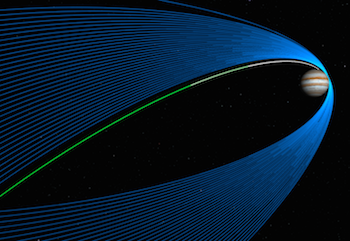
It’s easy to follow events from the Juno mission as they unfold. Here are several ways to follow along online:
Want to learn more? Read our full list of the 10 things to know this week about the solar system HERE.
Make sure to follow us on Tumblr for your regular dose of space: http://nasa.tumblr.com

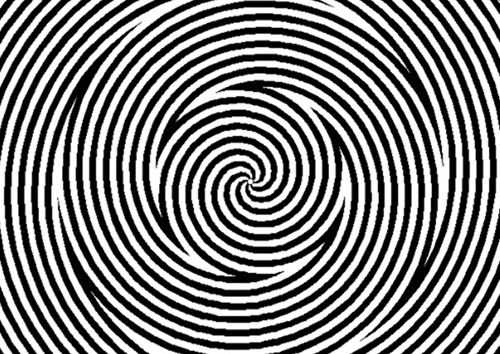





Well, this is definitely the most fun I’ve had while making a post.
Inspired by this one from capnphaggit. Images & copyrights: Trifid Nebula (M20) by Marcus Davies, The Cat’s Eye Nebula and Star-forming region Sharpless 2-106 by NASA, ESA, the Hubble Heritage Team (STScI/AURA). Please don’t remove the credits.
Z is for Zika virus!
Science Alphabet Game!
A is for Adenine!
Reblog with the next letter.

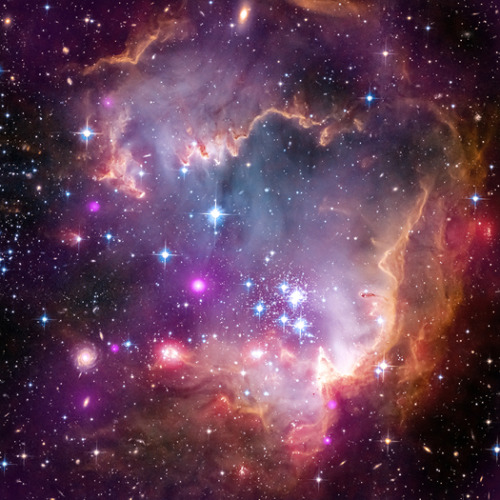




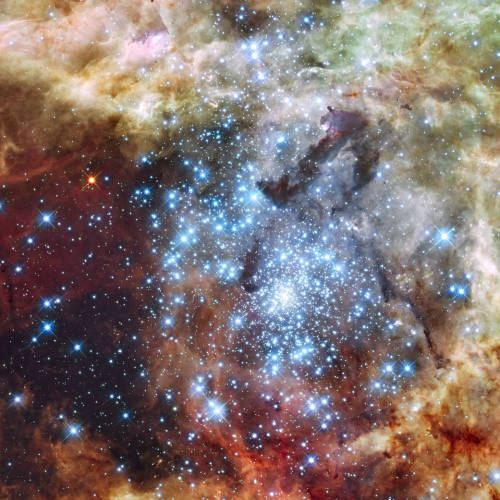



The astro-fashion-loving Internet collectively gasped when ESA’s Hubble twitter account posted three gorgeous gowns, by Czech designer Jirina Tauchmanova with only credit “Photo: Vasek”, which google thinks is a Canadian tennis player. For four long days I couldn’t find anymore images, until, today! Which is why I’m sharing a belated #FashionFriday and #StarrySunday combo.
These gown were shown at Serbia Fashion Week back in December 2015 as Jirina Tauchmanova‘s Spring/Summer 2016 collection – I hope that means they will be available for purchase soon!
I think I recognize at least two of the images, NGC 602 & 30 Doradus, but I’m going to have to see these in person to be sure, yes, definitely, and probably try them on, too.
–Emily
It’s Surprisingly Easy To Brew Something Like RNA In A Puddle
One of the biggest mysteries in science is how you could get life in a place where it doesn’t already exist. Scientists have found some clues, though.
The latest is that Georgia Tech chemist Nicholas Hud was able to create something that looks a lot like RNA — a relative of DNA — using ingredients that would have been common on Earth when it was 4 billion years younger.
The study used two common chemicals left alone in what amounts to a mud puddle. The chemicals synced up and started forming that twisting ladder shape we think of when we picture DNA.
Scientists say this looks like a decent candidate for how simple organisms may have gotten started on Earth, and it wasn’t even all that hard.
Earlier studies have shown you can get some of the building blocks of life in the right situation, like extreme heat or lightning strikes. Some have even been found on asteroids.
The Georgia Tech study shows you don’t even need that much excitement. Swirling puddles could potentially have done the job.
By: Newsy Science.

Hi all! Grace here.
I am not yet studying Anatomy and probably won’t until next year, but I decided to look up sources relating to Anatomy and gather them here for future reference! I will be adding more to it as I find more. If you are currently studying Anatomy or already have, please let me know if there were sources you are using/did use that were/are helpful so I can add them! :)
Nurse Journal
Human Body Images
Gross Anatomy
E-Skeleton
Human Anatomy
Introduction to the Human Body
Digestive System: The Inside Story
Body Parts Game
The Immune System
Human Anatomy Learning Modules
The Respiratory System
Anatomy of the Eye
Digestive Disorders and Anatomy
Anatomy Flashcards
Human Anatomy and Physiology
Blood Type Lesson Plan
Introduction to Human Genetics
Anatomy of the Human Brain
Heart Anatomy
Anatomy of the Lungs
NYU Virtual Microscope
Muscle Quizzes
Parts of the Brain
Dermatology Glossary
Interactive Body Games
Anatomical Images
The Bone Box
Muscles of the Body
Anatomy and Physiology Course
Human Body Maps
The Digestive System
Interactive Case Studies
Online Biology Book
Radiographic Anatomy
Body Guide: Skin
Immunity Guide
Anatomy Self-Test
I hope this is helpful! x
![Some Websites That I Use For Geography [lessons + Revision] - A Mix Of Summary Notes Websites, Statistics,](https://64.media.tumblr.com/72f06e96ed90f93a4ec6344b5f914b80/tumblr_o2dsex58Rq1uk5pc8o2_r1_500.png)
Some websites that I use for geography [lessons + revision] - a mix of summary notes websites, statistics, geo-located data and other goodies :D enjoy! Hope you find something useful!
I’ve only put my faves tbh but ** = I’ve used this a lot A LOT
Scribd: honestly some docs on here are so useful for help structuring your own notes etc. [our teacher uses this one for example for the glossary]
**Sporcle: i use this to test my place knowledge! [i’ve linked you to the world one, but you can find other continent specific ones too]
[Alternative to above that I personally haven’t used much but it looks decent so]
World Mapper: Really cool maps and omg countries look so funny distorted heu heu (HONESTLY SO USEFUL AND VISUAL) [i’ve linked to the old site haha]
**Gapminder: I’ve linked you to the program itself [so so so good omg for global trends over time GENIUS] but Hans Rosling is a cinnamon roll go watch the videos too!!
Information is beautiful: I love infographics okay fight me on this. You could have a look at this one and oh here’s the blog and just have an explore tbh [there’s isn’t a huge number of infographics on here tbh it’s a shame but i guess they’re trying to sell the book so fair]
**Datashine (UK centric): UK Census 2011 info geo-located and ahhh it’s so useful
they also have this one on commuting if you’re about that life
*******CIA World Factbook: ALL THE STATS! LIFESAVER! 10Q America! (that maths pun stop me pls)
Generally amazing website that is succinct and you could probably find so much on here tbh
Quizlet: really useful resource!! flashcards!! i love this site!! (and there’s an app hehe) test yourself on case studies etc!!
[tip: you can duplicate ppl’s flashcards and edit them if there’s anything you want to add!]
BBC bitesize ayyy for gcse peeps! (and in general too :) )
S-cool [linked again to the gcse site cuz that’s what was bookmarked but they have an a-level section too!] Some real concise notes tbh and may be useful even if you aren’t studying gcses/alevels! :)
my other masterpost/ramble hybrids are all (there’s like 2 others lol) here and feel free to come rant at me (or just talk lel) if any links don’t work etc!
in hindsight a better header for this would have been ‘resources i rely on way too much for geography’ (*´◡`)

Group Of Galaxies Called “Stephan’s Quintet.” The Quintet Is A Prototype of A Class Of Objects Known As ‘Compact Groups Of Galaxies

The Lagoon Nebula - M8 in Infrared
The Lagoon Nebula (also known as Messier 8/M8 or NGC 6523) is a giant interstellar cloud and emission nebula located in the constellation Sagittarius approximately 5,000 light-year from earth. The nebula contains a number of Bok globules, which can be seen as dark, collapsing clouds of gaseous material. This Particular image shows a star forming central region in infrared and was captured by the VISTA telescope at ESO’s Paranal Observatory in Chile.
Credit: ESO/VISTA

The Carina Nebula - A Birthplace Of Stars
The Carina Nebula lies at an estimated distance of 6,500 to 10,000 light years away from Earth in the constellation Carina. This nebula is one of the most well studied in astrophysics and has a high rate of star formation. The star-burst in the Carina region started around three million years ago when the nebula’s first generation of newborn stars condensed and ignited in the middle of a huge cloud of cold molecular hydrogen. Radiation from these stars carved out an expanding bubble of hot gas. The island-like clumps of dark clouds scattered across the nebula are nodules of dust and gas that are resisting being eaten away by photons (particles of light) that are ionizing the surrounding gas (giving it an electrical charge).
Credit: NASA/Hubble

Infographic about Planet 9, the required planet to explain the trajectory of six of the most distand known Kuiper Belt Objects.
Source: http://imgur.com/S5faizX

Would It Be A Bad Thing to Wipe Out A Species … If It’s A Mosquito?
Mosquitoes have a nasty reputation.
The species Aedes aegypti, for example, is currently responsible for spreading the Zika virus through the Americas and also infects humans with dengue fever, chikungunya and yellow fever.
This raises the question: Should there be an effort to get rid of Aedes aegypti for good?
“There’s been lots of debate in the last 10 years whether we should eradicate mosquitoes, or at least the 100 species or so that serve as disease vectors for humans,” says David Magnus, director of Stanford University’s Center for Biomedical Ethics. “If you look at the science, the majority [of scientists] think we could probably eliminate mosquitoes without too much harm on the environment.”
Read the full story here.
Illustration: Matthew Twombly


The maximum life span is a theoretical number whose exact value cannot be determined from existing knowledge about an organism; it is often given as a rough estimate based on the longest lived organism of its species known to date. A more meaningful measure is the average life span; this is a statistical concept that is derived by the analysis of mortality data for populations of each species. A related term is the expectation of life. Life expectancy represents the average number of years that a group of persons, all born at the same time, might be expected to live, and it is based on the changing death rate over many past years.
The concept of life span implies that there is an individual whose existence has a definite beginning and end. What constitutes the individual in most cases presents no problem: among organisms that reproduce sexually the individual is a certain amount of living substance capable of maintaining itself alive and endowed with hereditary features that are in some measure unique. In some organisms, however, extensive and apparently indefinite growth takes place and reproduction may occur by division of a single parent organism, as in many protists, including bacteria, algae, and protozoans. In order to consider life span in such organisms, the individual must be defined arbitrarily since the organisms are continually dividing. In a strict sense, the life spans in such instances are not comparable to those forms that are sexually produced.
There is a brief period during which it is impossible to say whether an organism is still alive, but this time is so short relative to the total length of life that it creates no great problem in determining life span.
Some organisms seem to be potentially immortal. Unless an accident puts an end to life, they appear to be fully capable of surviving indefinitely. This faculty has been attributed to certain fishes and reptiles, which appear to be capable of unlimited growth. Without examining the various causes of death in detail, a distinction can be made between death as a result of internal changes (i.e., aging) and death as a result of some purely external factor, such as an accident. It is notable that the absence of aging processes is correlated with the absence of individuality. In other words, organisms in which the individual is difficult to define, as in colonial forms, appear not to age.
[Continue Reading→]

Underwater explosions are incredibly dangerous and destructive, and this animation shows you why. What you see here are three balloons, each half-filled with water and half with air. A small explosive has been set off next to them in a pool. In air, the immense energy of an explosion actually doesn’t propagate all that far because much of it gets expended in compressing the air. Water, on the other hand, is incompressible, so that explosive energy just keeps propagating. For squishy, partially air-filled things like us humans or these balloons, that explosion’s force transmits into us with nearly its full effect, causing expansion and contraction of anything compressible inside us as our interior and exterior pressures try to equalize. The results can be devastating. To see the equivalent experiment in air, check out Mark Rober’s full video on how to survive a grenade blast. (Image credit: M. Rober, source)


These slides, presented during the New Horizons’ press conference at the 47th Lunar and Planetary Science Conference, show the climate zones of Pluto compared to Earth. Pluto has an axial tilt of 120°, which creates extreme tropic and arctic regions. The two regions overlap, creating a ‘tropical arctic’ region that experiences both direct sunlight and prolonged sunlight and darkness. At the moment, Pluto is in an intermediate state between the extreme tropic and arctic climates.
Image Credit: NASA/Johns Hopkins University Applied Physics Laboratory/Southwest Research Institute


The Veil Nebula - Sharpless 103
Located 1,500 light-years away in the constellation Cygnus is a cloud of heated and ionized gas and dust known as the Veil Nebula. The Veil Nebula is the visible portion of a massive supernova that erupted around 7,000 years ago to form what is now known as the Cygnus Loop. The Veil Nebula has a diameter of 100 light-years which appears to be 6 times the diameter of the full moon in the night sky. Due to the scale of the Veil, astronomers often segment the nebula into western (Caldwell 34), eastern (Caldwell 33) and northern portions. This particular images shows the western portion of the nebula with NGC 6960 (the Witches Broom), NGC 6979 (Pickering’s Triangle), and other significant cataloged objects.
Credit: NASA/Digital Sky Survey


Gliese 832c: is a Potentially Habitable Super-Earth Discovered only 16 Light-Years from Earth
A team of astronomers led by Dr Robert Wittenmyer of the University of New South Wales have discovered the super-Earth. The newly discovered exoplanet, labeled Gliese 832c, has an orbital period of 35.68 days, a mass 5.4 times that of Earth’s and receives about the same average energy as Earth does from the Sun. Gliese 832c might have Earth-like temperatures, giving it a similar terrestrial atmosphere. If the planet has a similar atmosphere to Earth it may be possible for life to survive, although seasonal shifts would be extrem.
Gliese 832c was discovered from its gravitational pull on its star, which causes the star to wobble slightly.
Can you explain in a simple (???) way gravitational waves? please? do you know any books about it?
Sure!
According to Einstein’s General Theory of Relativity, what we think of as "empty space” isn’t nothing. Instead, space is more like a fabric that can be stretched, squashed, bent and shaped, and all matter and energy cause space to bend around them. The more mass or energy something has, the greater the bending of space around it it causes, a bit like heavier and lighter balls on a rubber sheet:

(Source - Note that this picture is a 2D analogy, and space is actually 3D! The bending of space isn’t something we can easily visualise, so we have to use analogies like the “balls on a rubber sheet” analogy - as long as we recognise their shortcomings!)
Let’s imagine the Sun is a bowling ball dropped onto a rubber sheet, creating a huge dent in space. And now let’s roll a marble - Earth - onto that sheet too. IF the marble is rolling too slowly, it will fall into the dent and roll around a few times, spiralling in and eventually colliding with the ball. If the marble is rolling too quickly, its path will be bent, but it will escape. If it’s rolling at a certain speed, however, the marble will roll around the bowling ball and go into orbit around it. (Here’s another shortcoming of the rubber sheet analogy - real rubber sheets have friction, so the marble would eventually slow down and roll in towards the bowling ball. Space, however, has no friction, so the Earth can stay in orbit around the Sun for a long time.) In other words, this bending of space is what we refer to as gravity!
In Newton’s view of gravity, Earth would naturally follow a straight line through space, but its path would be bent towards the Sun by a mysterious pulling force. That force holds the planets in orbit around the Sun and pulls apples to Earth, but Newton couldn’t explain why - a mysterious influence that spread out through space, called the gravitational field, somehow caused bodies to attract one another. Einstein explained that massive objects curve the space around them. Earth would also naturally follow a straight line through space, but the space itself is curved, forcing Earth to follow a curved path - it’s a bit like trying to walk in a straight line along a hill. Try as you might, your path will have to bend to follow the contours of the landscape. According to Einstein, gravity isn’t really a “force” as such but an effect of this bending of space. Matter and energy tell space how to bend; space tells matter and energy how to move. That’s all gravity is. The gravitational field isn’t some mysterious entity in space - the gravitational field is the space itself! Here’s a nice little video to help you visualise all this:
(I’m oversimplifying a little, btw, saying that gravity is the bending of “space.” In Einstein’s theory, the three dimensions of space are unified with time into one four-dimensional fabric, the space-time continuum. So gravity isn’t just the bending of space, but the warping of time too - you can’t change one without changing the other! Gravity actually slows time down, so you would age slightly faster in space than you do at Earth’s surface. The difference is incredibly tiny, but measurable - time passes more quickly for the GPS satellites than it does for us here on Earth, and what the clock of a GPS satellite would measure as “one day” is about 38 microseconds shorter than what we measure as “one day.” That doesn’t sound like a big difference, but engineers have to take it into account when designing GPS systems - if they didn’t account for this, your GPS location would drift by as much as 10 kilometres per day! So this isn’t just some abstract theory - this is a real effect that’s already important for technology you probably use every day.)
General Relativity has now been through many, many tests and has passed every one with flying colours, and all of its predictions had been verified by the beginning of 2016 except one - gravitational waves.
What would happen if we could somehow destroy the Sun? Newton believed that there was a mysterious gravitational connection between the Sun and Earth, holding Earth in its orbit, that would instantly be broken if the Sun was destroyed. Earth would instantly fly out of its orbit in a straight line. Einstein, however, didn’t like this - his Special Theory of Relativity (which he put out 10 years before the General Theory) says that no information could ever travel faster than light. It takes about 8 minutes for the Sun’s light to reach us, so how could Earth fly out of its orbit instantly? That would let us know the Sun had been destroyed 8 minutes before the light from the Sun’s destruction reached us. Einstein wasn’t comfortable with this.
Thankfully, General Relativity resolves the paradox - if you got rid of the Sun, Earth would still stay in its orbit for a while, because the space-time around the Sun would still be curved. Meanwhile, at the place where the Sun was, space-time would spring back to its original flat state, and that would ripple through the surrounding space-time as everything adjusted back to where it was. That ripple - a gravitational wave - would spread out through space at the speed of light, so the space around Earth would stay curved and Earth would remain in its orbit until the same time the light from the Sun’s destruction passed us - at which point the gravitational wave would ripple through the space around Earth and restore it back to its original flat state, and Earth would finally leave its orbit.

Of course, in reality, stars don’t just disappear. But the gravitational environment does change. Stars move around, and the fabric of space-time also moves with them. Stars explode. Black holes and neutron stars form, putting huge dents in space-time, and sometimes they collide. All these events are a bit like changing the environment in a still pond - stars and planets gently orbiting are like ducks gently gliding through the pond, creating gentle ripples as they disturb its surface - and black hole collisions are more like throwing a rock into the pond and sending out massive waves. Almost everything in our universe produces gravitational waves, but most of the time, they’re too tiny to detect. (That’s why I said in real space the Earth can orbit the Sun for “a long time,” and not “forever.” Earth is constantly sending out very faint gravitational waves as it rolls around the Sun and moves through the fabric of space-time. Those waves are too small to detect, but they very, very slowly sap Earth’s energy and cause it to very, very slowly spiral in to the Sun. In reality, that would take unimaginable trillions upon trillions of years, and Earth will probably be destroyed by the dying Sun long before that! Even if Earth manages to survive that, it’s more likely to be pulled out of orbit by an incredibly rare passing star or knocked out by unpredictable gravitational tugs from the other planets or something before it spirals into the Sun. Orbits are stable for a very, very, very, very long time.) More intense sources of gravity than our puny Earth and Sun, however - things like neutron stars and black holes - can generate detectable gravitational waves.
Our first indirect evidence of gravitational waves came in 1984, when the American astronomers Russel A. Hulse and Joseph A. Taylor discovered a binary neutron star system - two intense sources of gravity orbiting each other very rapidly. As they orbited each other, they sent out huge gravitational ripples - a bit like stirring up that duck pond with two oars whirling round and round - and lost energy by a detectable amount. Hulse and Taylor found that their orbital period slowed down by about 75 milliseconds per year - short, but detectable! That slowing exactly matched the predictions of gravitational wave theory and got its discoverers the Nobel Prize for Physics in 1993.

(Source)
But gravitational waves weren’t directly observed until 2015 (and confirmed until this year) by a detector named LIGO (the Laser Interferometer Gravitational wave Observatory). All LIGO is is basically two beams of laser light travelling between two pairs of mirrors oriented at right angles to each other, like this, so you can measure how space-time is stretched in one direction and squashed in the other by a passing gravitational wave by recording how long it takes the light to travel from one mirror to the other*:


(Source for both images: http://phys.org/news/2016-02-ligo.html)
LIGO’s two “arms” (the two beams of light) are each 4 kilometres long, and a gravitational wave passing through the detector stretches or squashes each of the “arms” by a ridiculously small amount - the ones LIGO actually found stretched and about 1/10,000th the width of a proton. As you can imagine, the LIGO physicists had to account for many, many different effects that shook the detector too. But gravitational waves distort the two beams in a predictable way that would make that distortion stand out from ordinary passing trucks or distant earthquakes, and by February 11th, 2016, the LIGO physicists were confident enough that they really had detected a faint ripple in space-time passing through their detector. The signal was consistent with a gravitational wave from two black holes in orbit around each other, spiralling in to one another.

(Source)
This is exciting for two reasons:1) It confirms the last outstanding prediction of General Relativity, and2) It opens up a whole new field of astronomy! Every so often astronomy is revolutionised by the discovery of new things we can look at from space. Originally all we could detect was the visible light that we could see with our eyes and telescopes. But soon we learned to build radio telescopes, and that opened up a whole new world to us - we could see phenomena that were invisible in ordinary light. With space telescopes we could see the sky in gamma rays, x-rays, ultraviolet and infra-red light as well. Now we could see the explosions of distant stars halfway across the observable Universe, look at clouds of gas and dust too cool to shine in visible light, and peer through other dark clouds to see stars forming inside. We also found particles we could see coming from space, too - neutrinos from the Sun and from supernovae, and cosmic rays. These opened up other windows on the Universe. And now we have gravitational waves - yet another new way of “seeing.” Gravitational wave astronomy will let us study some of the most puzzling events in the Universe, like colliding neutron stars, or black holes falling into other black holes - events we’ve never been able to see before.
So I hope that helps, Anon!
As for books, the problem is gravitational waves were detected so recently I don’t know of any books that have come out since then on the subject, so everything will be out of date. However, the basic physics has stayed the same since Einstein first predicted them, so any good popular book on general relativity (Spacewarps by John Gribbin, The Fabric of the Cosmos by Brian Greene and Travelling At the Speed of Thought: Einstein and the Quest for Gravitational Waves by Daniel Kennefick are good examples) should give you some good insight - just replace phrases like “if we detect gravitational waves” with “when we detected gravitational waves!”
(*Yes, yes, I know LIGO isn’t actually measuring the time taken for light to travel down each “arm,” but the interference of the laser beams. Still, that interference allows us to infer the travel time for the light, so I’m simplifying.)


